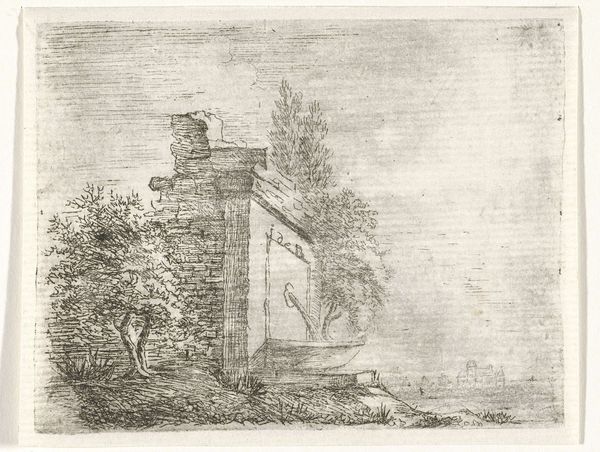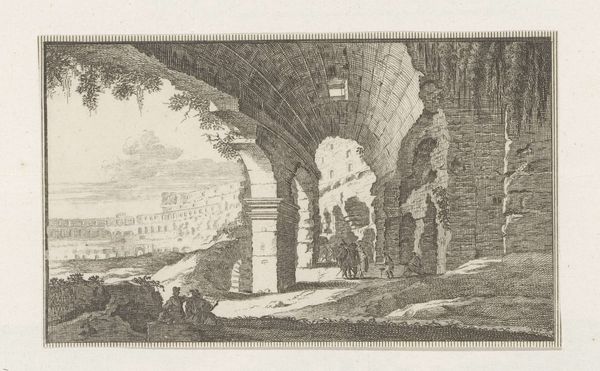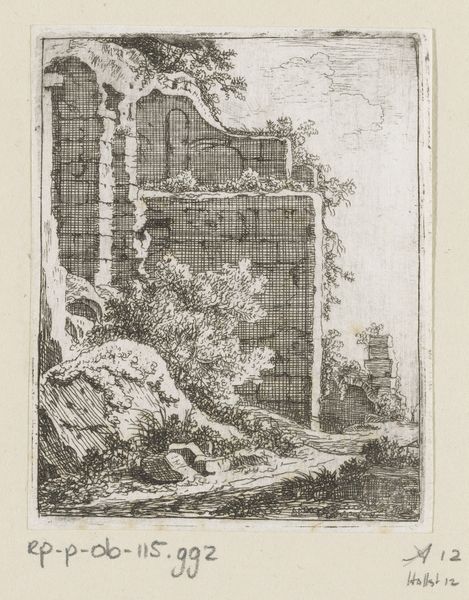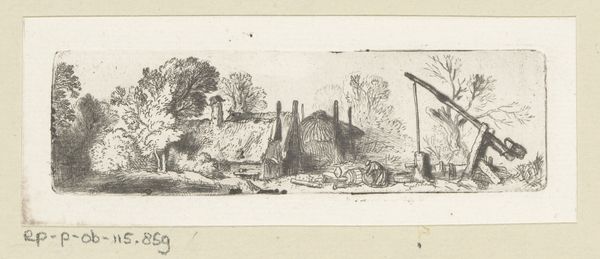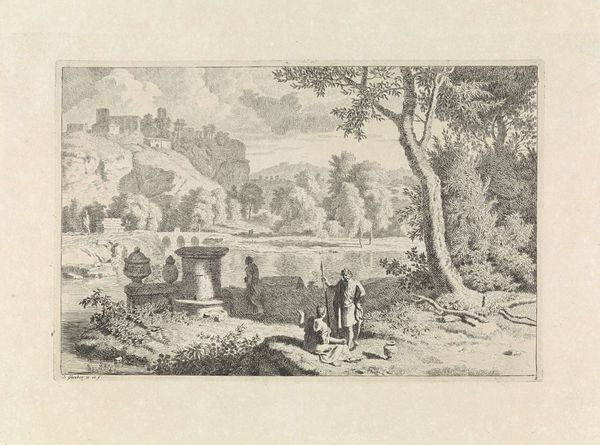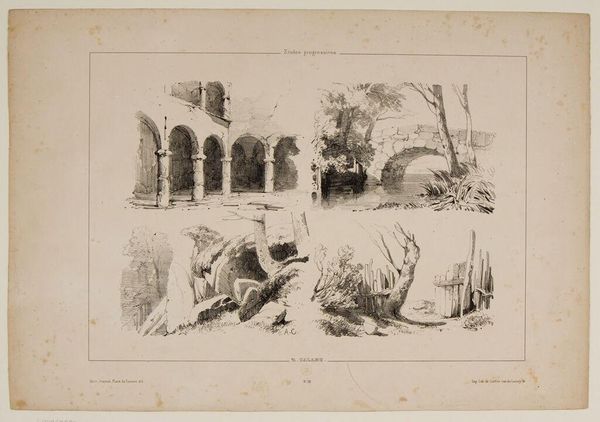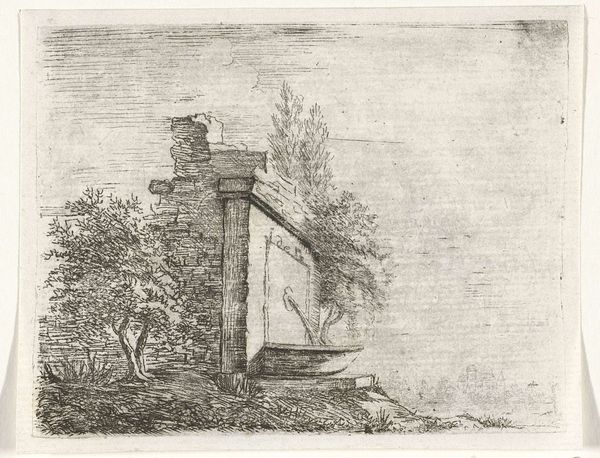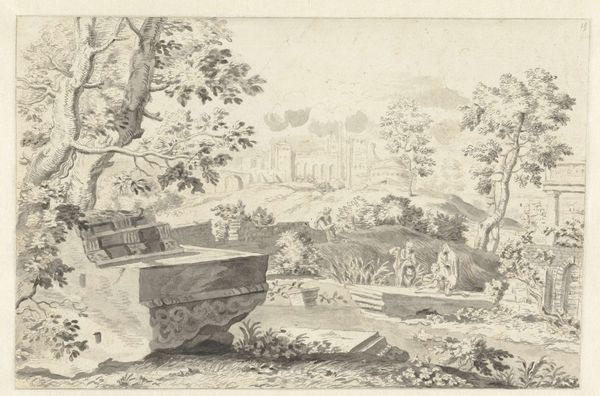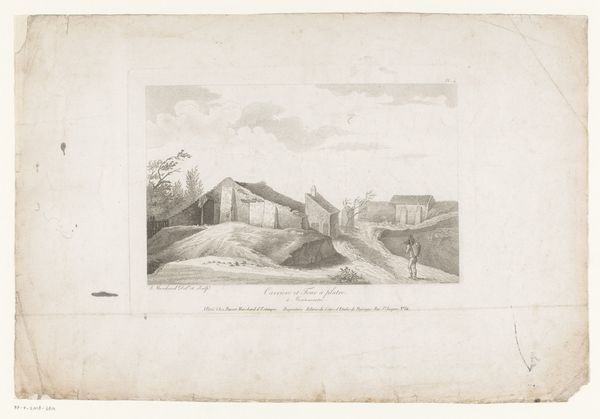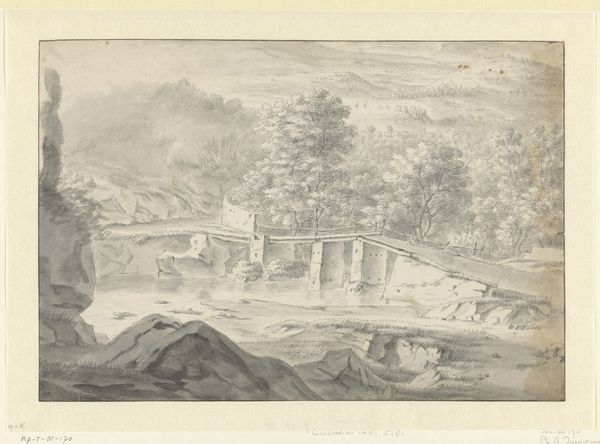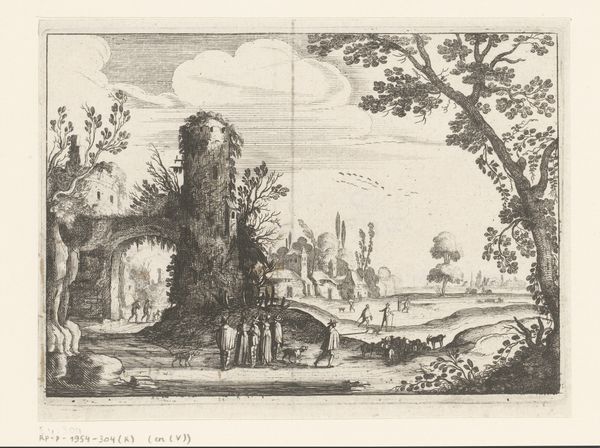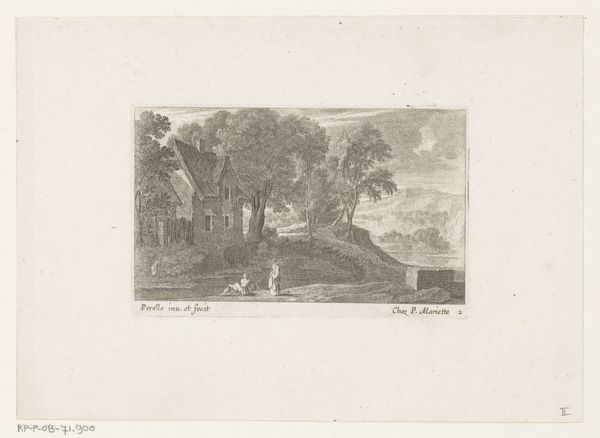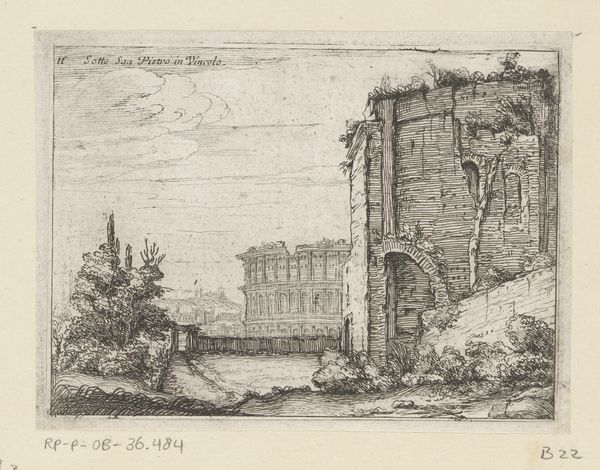
Dimensions: support: 264 x 363 mm
Copyright: CC-BY-NC-ND 4.0 DEED, Photo: Tate
Curator: Welcome. We're looking at John Downman's "The Colosseum, Rome," a pencil and gray wash drawing held at the Tate. What strikes you initially? Editor: The ruin almost blends into the landscape. Instead of grandeur, I see nature reclaiming a space, hinting at time's indifference to human monuments. Curator: Note how Downman uses the arch motif – framing devices that both reveal and conceal different aspects of Roman history and life. The crumbling stone tells its own story. Editor: Absolutely. The Colosseum functions as a symbol, embodying collective memory. It's more than architecture; it represents the rise and fall, endurance and decay, witnessed by generations. Curator: And consider that the ruin itself became a subject during a period of significant social and political change. Downman's view captures that tension. Editor: It's a poignant perspective on the passage of time and the inevitable decline of even the most powerful empires. Gives us pause, doesn't it? Curator: Indeed, a moment to contemplate our own fleeting moment in history.
